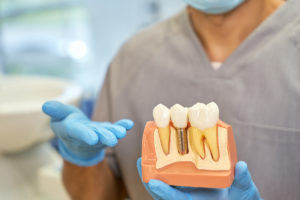When you think about what causes teeth to shift, braces, genetics, or aging might come to mind. But did you know your tongue can cause teeth to shift, too? That’s right—your tongue’s posture, pressure, and habits like tongue thrusting can significantly impact the alignment of your teeth over time. In this blog, we’ll explore how the tongue influences teeth positioning, the common causes, and what you can do to prevent these issues.
How the Tongue Affects Teeth Alignment
Your tongue is a powerful muscle, and its position at rest or during activities like swallowing can exert constant pressure on your teeth. Ideally, your tongue should rest gently against the roof of your mouth, with the tip just behind your front teeth. This position helps maintain the shape of your dental arches and supports proper teeth alignment.
However, if your tongue rests too low, pushes against your teeth, or thrusts forward during swallowing, it can gradually push your teeth out of place. Over time, this pressure can lead to crowding, gaps, or even bite problems like overbites or underbites. If you’ve noticed changes in your smile, it’s worth exploring whether your tongue habits might be the cause.
Common Causes of Teeth Shifting Due to the Tongue
- Tongue Thrusting: It occurs when the tongue pushes against the front teeth during swallowing or speaking. It’s common in children but can persist into adulthood if not corrected. The good news? Tongue thrusting can be corrected at any age with the right treatment, such as myofunctional therapy or orthodontic care.
- Mouth Breathing: Breathing through your mouth instead of your nose can cause your tongue to rest low in your mouth, reducing support for your dental arches.
- Improper Swallowing Patterns: When you swallow, your tongue pushes against your teeth instead of the roof of your mouth, creating constant pressure that shifts teeth over time.
- Habits Like Thumb Sucking or Pacifier Use: These habits can alter tongue posture and contribute to dental misalignment.
Effects of Tongue-Related Shifting on Teeth
Misalignment and Crowding: The tongue exerts continuous pressure—up to 50 grams per square centimetre—when it rests or moves improperly. It can crowd or misalign them if it pushes too hard against the teeth, such as in tongue thrust. Lower front teeth are particularly susceptible to crowding when the tongue rests low instead of against the palate, a common issue we identified during exams.
Gaps and Spacing: When the tongue presses forward during swallowing or at rest, it can create gaps between teeth, often seen in cases of tongue thrust. This pressure can push front teeth apart, causing spaces or flared angles. Patients who notice these gaps widening over time may find that it can reverse years of orthodontic progress, a concern often identified during dental visits.
Open Bites: An open bite—where your upper and lower teeth don’t meet when you close your mouth—is a classic effect of tongue-related shifting. If the tongue habitually rests between your teeth, it stops them from settling properly.
Overbites or Underbites: A tongue that rests too far back or too low may contribute to an overbite (upper teeth protruding) or an underbite (lower teeth jutting out), depending on its impact on jaw growth. Our experienced dentists link this to tongue ties or mouth breathing, especially in younger patients.
Orthodontic Relapse: Even after braces, the tongue shifts teeth if old habits persist. Without proper tongue positioning—resting against the palate—teeth can drift back to their pre-treatment state. This relapse frustrates patients who thought their alignment was permanent, and it’s why we emphasize tongue training alongside retainers in our practice.
Jaw Development Issues: In kids, the effects extend beyond teeth to the jaw itself. When the tongue doesn’t support the upper palate, the jaw can grow narrow or misaligned, leading to crooked teeth later. Tongue ties or thumb sucking amplify this, something we catch early to prevent long-term damage.
Speech and Functional Problems: When the tongue shifts teeth, it can also mess with how you talk or chew. Lisps, for instance, often pair with flared front teeth from tongue pressure. Functionally, misaligned teeth might make biting into food harder, a complaint we hear from patients seeking solutions.
How to Identify Tongue-Related Dental Issues
Suspecting your tongue might be affecting your teeth? Look for signs that the tongue shifts teeth, like teeth shifting or turning crooked, especially if gaps or crowding appear over time. Difficulty keeping your lips closed at rest could hint at posture problems, while a lisp or speech issue might suggest tongue pressure. Chronic mouth breathing or snoring can also be indicators. These clues often point to the tongue’s role in dental changes and catching them early can make a difference when the tongue shifts teeth no longer goes unnoticed.
Prevention Tips
- Correct Tongue Posture: Train your tongue to rest against the roof of your mouth, not your teeth. This supports alignment and prevents pressure from pushing teeth out of place. We teach patients simple awareness tricks to build this habit.
- Break Bad Habits: Mouth breathing, thumb sucking, or forward swallowing can amplify shifting. Catch these early—especially in kids—to keep the tongue in cheek. Our team offers tips to swap these for healthier patterns.
- Early Screening: Regular dental check-ups can spot tongue issues before they escalate.
If you’ve noticed signs of teeth shifting or have concerns about your tongue posture, don’t wait—contact The Pines Dental Office today. Our experienced team will evaluate your smile, address any concerns, and create a customized treatment plan.



